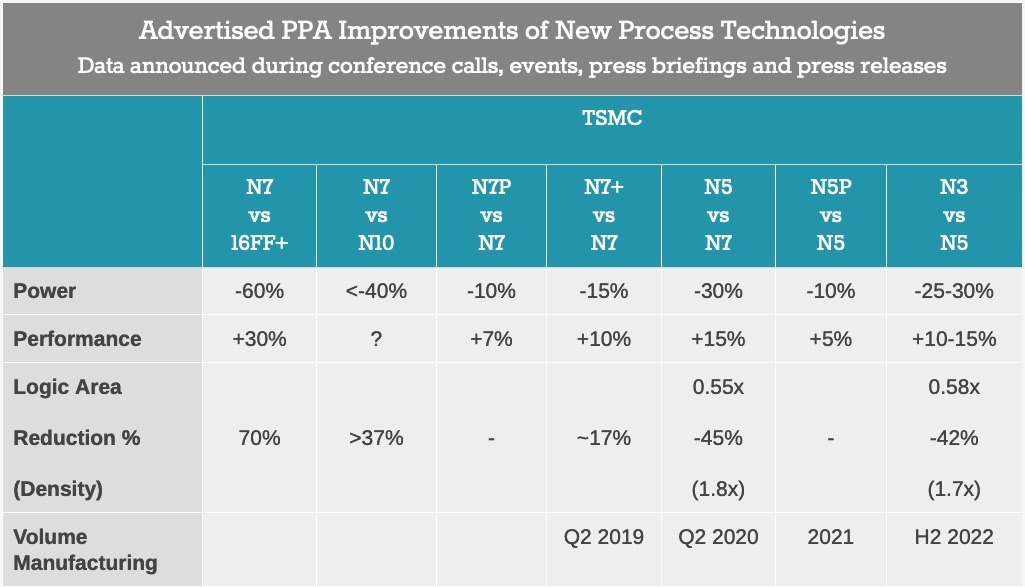Apple supplier TSMC has detailed some of the performance or power improvements from its new 5nm chip manufacturing process, expected to be used in the "iPhone 12."
The A14 chipset is rumored to be the first major Apple Silicon to be based on TSMC's 5nm process node, which will bring either performance or power efficiency improvements to Apple's flagship iPhones.
At its annual Technology Symposium, TSMC has itself given numbers for how the new 5nm chips could improve on Apple's past silicon. AnandTech has provided a graph of the improvements, based on those numbers.
The current A13 chipset is based on TSMC's 7nm process node, represented by the N7 designation. The N5 category represents TSMC's 5nm process node, which is expected to be used in Apple's A14 chipset.
Compared to the N7 A13 chip, an Apple A14 chip could either be 15% faster at the same amount of power or 30% more power efficient. It may also be somewhere in the middle. Apple, for its part, has historically focused on power efficiency in its iPhone processors. But, what Apple does with these gains in Apple Silicon Macs is yet to be seen.
According to AnandTech, TSMC is also mass producing 5nm chipsets at its production facilities. Apple's next-generation System-on-Chip (SoC) — the A14 processor — is expected to be among the first candidates to be made using the new process.
TSMC also gave a future look at its 3nm chipmaking process, which could be either 25% to 30% more power efficient or 10% to 15% more performant than the 5nm process. The chipmaker's 3nm silicon are expected to enter production by the second half of 2022.
Of course, these numbers purely represent hardware gains. Apple can further optimize performance or power efficiency in iOS, or through hardware and software optimization.
Apple is expected to debut four iPhone models in 2020: 5.4-inch and 6.1-inch "iPhone 12" models, and 6.1-inch and 6.7-inch "iPhone 12 Pro" devices. All are expected to sport a new squared-off design, support for 5G, and other upgrades.
 Mike Peterson
Mike Peterson








-m.jpg)






 Marko Zivkovic
Marko Zivkovic
 Mike Wuerthele
Mike Wuerthele
 Christine McKee
Christine McKee
 Amber Neely
Amber Neely
 Sponsored Content
Sponsored Content
 Wesley Hilliard
Wesley Hilliard

 William Gallagher
William Gallagher









28 Comments
When Apple presents a new A-series chip there is usually a chart showing the performance increase over the previous chip. Do we know how much of that increase is attributable to Apple’s chip design and how much is attributable to a new process node?
Yup. Exciting. Will be interesting if they implement SVE2 or not. The phone chip may have 32 MB of system level cache. The desktop chips maybe in the 64 to 128 MB of levels!
Also curious how the rumors on A14 are basically nil? There's been more rumors for Mac chips than the A14 or A14X.